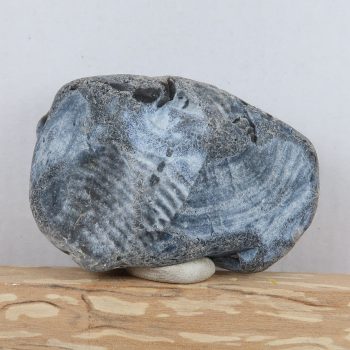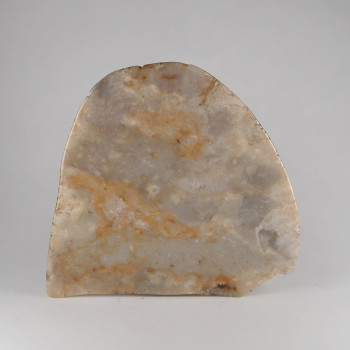Flint
Flint is also known as Chert – a form of sedimentary Quartz formed of very small crystals.
The distinction between names can be a little confusing, but strictly speaking, Flint is the variety of Chert that occurs in nodules within Chalk or Marl. This is very common around the UK, but less so in some parts of the world.
Flint has been used since prehistory for the making of tools and the lighting of fires.
Showing all 2 results
Appearance, Uses and History
Flint primarily occurs as nodules or masses in chalk or limestone. It is often found along streams, rivers, and shorelines.
Flint breaks into very sharp chips, which means it can be used to form sharp edged tools. Flint knives, scrapers, axes, and arrowheads are all ‘common’ finds; Native American arrowheads made of Flint are found all over the USA.
It has been used to make stone tools around the work for millions of years, and was one of the primarily materials used for tools in the stone age. When struck against steel, Flint produces sparks – it has been used as a firestarter or for ignition of gunpowder.
In the UK, it has long been used as a building material, with many old countryside houses and churches still having walls with Flint cemented into them. This is especially prevalent in areas where no good building stone is available.
My favourite type of flint is found in Poland, where it is called Krzemień pasiasty, or sometimes ‘polish diamond’; it is a fine banded flint that has been mined since the Neolithic, but has been gaining popularity with jewellery makers in the area.
The Neolithic mines at Krzemionki near the city of Ostrowiec Świętokrzyski were mined from 3900 BC and are now considered a UNESCO world heritage site.
Locales
Flint is widely found across Europe, including Belgium, France, Germany, Italy, Poland, Portugal, Spain, and the UK. It is also found in the USA.
Mineralogy
Banded Flint is a variant which can confuse people – it should be considered a pseudofossil as it is often confused for a fossil, but is not biological.
Hazards and Warnings
Almost all rocks, minerals (and, frankly, almost all other substances on earth) can produce toxic dust when cutting, which can cause serious respiratory conditions including silicosis.
When cutting or polishing rocks, minerals, shells, etc, all work should be done wet to minimise the dust, and a suitable respirator or extraction system should be used.
Translations
Arabic:
- الصوان
- الشرت صخر صواني
Hindi:
- चकमक पत्थर
Portuguese:
Bengali:
- চকমকি পাথর
Indonesian:
Punjabi:
English:
Italian:
- pietra focaia
Russian:
- кремень
French:
- silex
Japanese:
Spanish:
- pedernal
German:
- Feuerstein
Korean:
- 부싯돌
Thai:
Gujurati:
Mandarin and Traditional Chinese:
- 燧石
Urdu:
- چکمک


